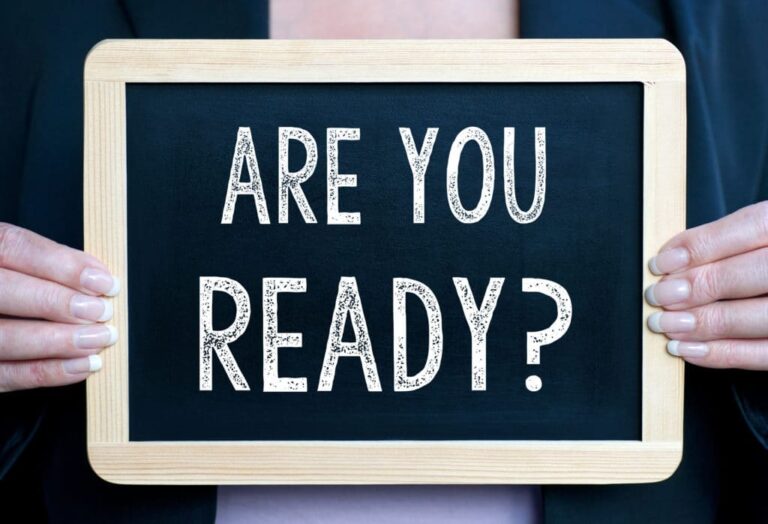Overview
Have you been online so far this morning? Have you done a business or purchase-related search? Or maybe made an online purchase?
Did you answer yes to all those questions? If you did, you’re most likely in the majority.
“Our lives are heavily digitized, companies have to have a digital presence otherwise they don’t really have any presence,” said Jonathan Mosley Managing Director of GEM Advertising. Mosley has over 10 years of experience in digital marketing and has seen the online switch over his career.
Why digitize? According to Mosley,“Because that’s where their customers are and companies have to go where their customers are.”
Though to some companies, an online switch has either occurred or is currently in the works, there are many who are reluctant. Numerous businesses have done it one way for so long, they are hesitant to change up the way they do things.
“For those business, I usually say, ‘Is there a need for you to find more customers, or are you 100% sure you’ll never need another customer?’”
The answer in most cases is no, so Mosley recommends digitalization.
“They have to look at reasonable strategies to find other customers and online is one of the most cost-effective ways to do so,” Mosley said. “Even if your business targets baby boomers, you’re still going to find them on Facebook, they still are going to Google your business to research it before they make a purchase, this is just how people have learned to behave in the new digital age.”
To aid in your digitizing journey, we wanted to outline three free social media platforms to use, how to set them up and why they are helpful for your business. Below we explore a Facebook Business page, Hootsuite and Google Analytics.
Creating a Facebook Business Page
More than one billion people are active on Facebook, according to Facebook Newsroom, so the chances are your customers – or prospective customers – are using this platform.
“A personal page doesn’t operate in the same way a business page does, the business page makes more sense for businesses because of its design,” Mosley said.
In addition to its design, using a Facebook Business Page is beneficial because:
- You have an increased exposure to potential customers
- You can reach targeted audiences
- You build brand loyalty
- You increase your web traffic
- You boost SEO
- You can keep an eye on competition
Facebook is not only useful in reaching prospective customers, it’s also needed to create other social media business accounts and the best part is this awesome business tool is free.
What You Need to Create a Facebook Business Page
Creating a Facebook Business page is pertinent to the success of your business online, and it’s easy. All you need is:
- A business name
- Business description
- Profile and cover photo
- The action you want people to take
Click here to get started on your Facebook Business page. Once you visit the link, you’ll see the following image.

Click the one that applies to you and follow the steps as outlined in front of you.
Once you fill out the information, you will see the following.

To get the most out of your business page, make sure to include a profile picture, a cover photo, a short description of your business, a button (potentially leading to your website or to a product page depending on the next step you want people to take).
On the far left panel, click the “About” section.

In the “About” section, you can give visitors more information about your business. You can tell people your story with a symbolic photo, you can include a map to let people know where you’re located and you can enter your contact information so people have a method of getting in touch with you.
As you look through other business pages, you’ll see that some are verified (include a small, blue checkmark beside the name of the organization).

Getting your business verified is possible, but does take some work. Here are some tips:
- Have a profile and cover photo
- Get “likes” and a lot of them
- Make sure you have company web history (this simply means you have a website)
- Complete the “About” section
- Link from company website (the more backlinks the better)
- Start posting
To see if your page is ready for verification, click on the “settings” button on the top right of your menu. In the drop down, you will see “Page Verification” with an edit button beside it. You may not see this initially when you launch your page. This simply means your page is not yet eligible for verification.
Once you’re all set – good job – you can get to the fun part and that’s engaging with your audience. Post regularly, we suggest once a day. The best time to post content is:
- Between 12 p.m. and 3 p.m. Monday to Friday
- Between 12 p.m. and 1 p.m. on the weekend
Click here to get some tips on writing the perfect post for each medium.
A Tutorial of the Facebook Business Page
At first the Facebook Business page can seem overwhelming, but the more you play around with it, the quicker you will learn.
Below is a short and concise tutorial of the buttons you’ll see on your page.

Starting a Hootsuite Account
Hootsuite is not only easy to use, it will make your life, when it comes to maintaining an online presence, a lot easier.
“Hootsuite is a really useful tool for managing social media,” Mosley said. “By scheduling it, you can do a month’s worth of work in one sitting.”
Here are four reasons to use this platform:
- You can monitor multiple streams in one place
- You can mange customer service on Twitter
- You can get free reports by email
- You can schedule months in advance so you can focus on the business rather than maintain an online presence
In addition to the many benefits that come with this social media management tool, there are over 16 million users according to iag.me.
Getting Started
To get started, you’ll need to open Hootsuite and click sign up in the top right corner.

Once you enter your information and choose a plan that is right for your business needs, you’ll go about adding social networks.
Connecting your social profiles allows you to schedule content and monitor engagement. You can manage up to three social networks free.
To add a social network:
- In the Hootsuite dashboard, select streams from the launch menu
- Click “Add Social Network”, select a network from the list, click “Connect” and authorize your accounts to connect
To schedule content, click the “Compose message” at the top of the platform, write your post, include a photo, schedule the time and click the social network you would like the content to appear on.

Although you now know some tips on when to post on Facebook, here are some tips with other social networks.
On Twitter
- According to Social Report, you should post 20 times per month (or once a day during the week) and you’ll reach at least 60% of your audience
- The best time to post on Twitter during week days is between 9 a.m. and 4 p.m.
- Although it will be harder to reach your audience on the weekend – given the amount of content published – posting at 2 p.m. or 5 p.m. is a safer bet
On Instagram
- Instagram is one of the most used social platforms and requires a lot more effort in order for your business to do well. Aim to post between one to three times per day according to Social Buddy.
- The best time to post differs each day:
- Sunday: 5 p.m.
- Monday: 7 p.m. and 10 p.m.
- Tuesday: 3 a.m. and 10 p.m.
- Wednesday: 5 p.m.
- Thursday: 7 a.m. and 11 p.m.
- Friday 1 a.m. and 8 p.m.
- Saturday: 12 a.m. and 2 a.m.
Getting Started with Google Analytics
Google Analytics is one of the most popular tools you can use to understand your audience. Using the platform, you can sort through vast amounts of data quickly.
With a greater understanding of your audience, you can make more informed business decisions.
“The data is crucial in making business decisions,” Mosley said. “It gives you a deeper understanding of who prospective clients are, what they like, what they don’t like, when they want to make purchases, how they want to make purchases, where they live, age, demographics, all that is data that is useful in making business decisions.”
According to Marketingland, 13.2 million websites are using Google Analytics.
Ask yourself this question when using Google Analytics, “What is the purpose of the website?”
Simple data points to use which will tell you how things are going:
- How much time is spent on current pages
- Bounce rate (are they arriving and leaving in large quantities?)
- Following where they are clicking through to
- How they got to your site
- What device are they viewing your site on
Use the data to measure against very simple targets.
How to Start a Google Analytics Account
To start a Google Analytics, visit the link and click the “Start for free” button.

Once you sign into your Google account – if you don’t have one, it’s easy to sign up – you have to fill in your account name, website name, website URL and select an industry category and reporting time zone.
Once you do these steps, you need to get a tracking ID to put on your website to get proper analytics.
To do this, follow the steps below:
- Under “Data Sharing Options”, check the boxes next to the items you want, we suggest clicking all of them
- Click the accept box in the Google Analytics Terms of Service Agreement
- Once you click “Accept”, you will be taken to the Google Analytics interface
- Under the Google Site Tag, you will see what you need to copy and paste into the <HEAD> on every webpage you want to track
Once this is done, you can begin familiarizing yourself with the platform. There is a lot of steps necessary to master Google Analytics and rather than try to write instructions, we suggest taking the Google Analytics courses – both the beginner and the advanced. The courses are interactive and will help you understand every element of this platform.
When it comes to an online presence, Mosley stresses how important it is to maintain consistency and to own your presence.
“Own your URL, own your Facebook page, own your Instagram and Twitter handle, own your digital real estate because even if you’re not using them, you have them.”
We hope you’ve found this guide helpful in making the initial steps to digitizing your business. This is an important step in the 21st century and will help connect you with current and prospective customers.



